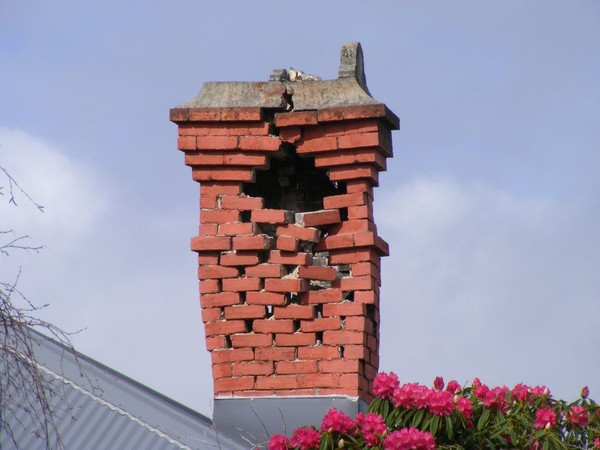Canterbury earthquake victims much better off than Californians

Canterbury earthquake victims head into 2011 knowing they are much better off than the people of California whose lives are mostly ruined by earthquakes.
The Canterbury earthquake response has been judged far more efficient than what occurred after the 2005 Katrina hurricane in New Orleans, a city that is still not rebuilt after more than five years, a leading American earthquake response expert says.
Dan Dyce, the Californian Earthquake Authority claims manager, said the Canterbury effort was every bit as good as any USA disaster response, and ``in fact much better than what occurred after the 2005 Katrina hurricane in New Orleans’’.
Dyce was one of several executives of the California Earthquake Authority who recently visited Christchurch after the September 4 earthquake.
``Our observations of the New Zealand system were real eye-openers,’’ he said. If the South Island’s earthquake had happened under a major California city, Kiwi visitors observing recovery a few months after the event would be witnessing near chaos—and returning a few years later, the picture would be better but recovery would still be incomplete.’’
As an example of Californian progress, the San Francisco-Oakland Bay Bridge was famously damaged in the 1989 quake, its permanent replacement structure will not be completed until 2013, some 24 years after the event.
Dyce said they were impressed with the near universality of EQC insurance coverage, the helpful and cost-effective “top-off” cover offered by private insurance companies, and the excellent overall level of response and assistance being provided to New Zealanders with damaged homes.
``We know this will lead to the quickest possible recovery, for families and for the community, particularly because additional public expenditures can go immediately to public expenses such as damaged infrastructure.
``While at times people living in or awaiting repair of their damaged homes will grow impatient for a return to normalcy, we saw just how quickly the EQC staffed up their adjuster and estimator response teams as well as its organisational ability to handle all facets of the massive event response.’’
New Zealanders are quite fortunate that the average annual cost for earthquake cover is less than $60 for the first $100,000 of coverage, with minimal additional cost charged for higher, replacement-cost limits provided through private insurers. By comparison, the average annual cost for a homeowner’s earthquake policy in California is about $US690, some 15 times more expensive and with a much, much higher excess (deductible).
In New Zealand, the average structure excess (deductible) for EQC cover is about $200. The average structure excess (deductible) on a California residential EQ policy is about $US55,000. Everyone in New Zealand with a home fire insurance policy automatically benefits from the EQC cover. Only about 10 percent of California homeowners decide to buy, or can afford to buy, earthquake insurance.
``So, while major natural disasters are not at all easy to deal with, New Zealand as a country has made decisions around earthquake insurance that put New Zealanders in good shape to emerge at the other end of this disaster,’’ Dyce said.
``As a result, most folks in and around Christchurch will eventually have their homes fully repaired without incurring additional financial burdens when all is done.
``The EQC response is as good as any we have seen or experienced in the USA. And from our experience in the world forum of catastrophe programmes, we can attest that New Zealand’s EQC is seen as not only a pioneer in the field but a leader in financial and social recovery from earthquakes.’’
Canterbury’s 7.1 earthquake is interesting to compare with other big shakes in modern times.
In 1989, the 6.9 earthquake close to San Francisco about 5pm killed 63 people and injured 3757 and left more than 3000 people homeless, at least temporarily. At that time, earthquake insurance was less expensive than today; as a result, more people purchased it (about 25 percent in 1989 compared to about 10 percent today). Most of the deaths caused directly by the earthquake occurred when the Oakland Bay Bridge collapsed.
In 1994, California had a 6.7 earthquake epicentered in Northridge, California (close to Los Angeles), causing 72 deaths and 9000 injured—there were $16US billion in residential damages. Eleven hospitals suffered structural damage and were unusable immediately after the earthquake.
Fewer than a third of local residents had earthquake insurance, and for those who did, the insurance-claims process was slow and uncertain, taking up to five years in a number of cases.
For those without earthquake insurance, some lost their homes to the lender holding the mortgage, some lived in unrepaired sub-standard housing for quite some time, and others simply moved to a rented house or apartment and never recovered financially.
In California, earthquake insurance is a completely voluntary purchase: no bank or law compels its purchase, it is very expensive, and the policy carries a huge excess (deductible).
Because no government helps provide or guarantee the public CEA its claim-paying capacity, expensive reinsurance is purchased year after year, and the high costs are passed on to policyholders. Those lucky enough to afford the policy may more easily recover after a large earthquake—the uninsured will await limited government assistance (usually offered as loans, to be repaid along with the mortgage) or fall back on the help of friends or family. That describes a rocky and uncertain road to recovery.
Note: As at December 21, the EQC had paid out 30,000 of the 50,000 Canterbury contents claims. The total number of claims is 161,259 and so far they have resolved 24,000 of those claims, paying out $515 million. EQC staff have still to inspect more than 92,000 homes. But they have contacted or inspected nearly 70,000 home owners. EQC is employing more than 1000 people and the numbers will grow in January as they bid to reach their new targets of paying out all under $10,000 claims by January 31 and to inspect or contact all homeowners by the end of March.
